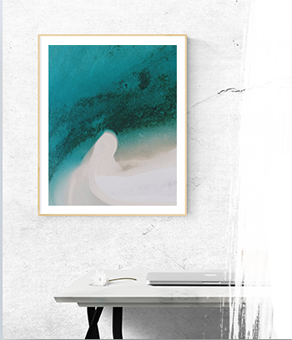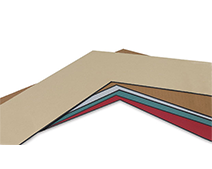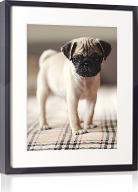Choosing the Right Glass for Picture Frames: Enhance Your Art's Beauty and Longevity
Choosing the Right Glass for Picture Frames: A Guide to Enhance Your Art's Beauty and Longevity
When it comes to displaying artwork or photographs, the choice of glass in your frame can make a significant difference. This guide explores the various types of glass available and their benefits to help you make an informed decision.
Types of Glass for Picture Frames
- Regular Glass: Offers basic protection and is cost-effective, but lacks UV protection and glare reduction.
- Reflection Control Glass: Reduces glare significantly, allowing the true colors and details of your artwork to shine without distractions.
- UV Protection Glass: Blocks up to 99% of UV rays, protecting your art from fading over time.
- Combination UV and Reflection Control: Provides both UV protection and reduced glare, ideal for preserving and displaying art in brightly lit areas.
- Museum Glass: The premium choice, offering the highest clarity and protection with over 98% light transmission and near invisibility.
Benefits of Upgrading Your Frame Glass
Upgrading to a higher-quality glass not only enhances the visual impact of your artwork but also ensures its preservation for future generations. Reflection control glass and museum glass, for instance, provide superior clarity and minimal distraction from reflections, making them ideal for both aesthetic presentation and protective purposes.
Technical Specifications
Here are the detailed technical specs for each type of glass:
- Standard Glass: Thickness: 2.5mm, Reflection: 8%, UV Block: 45%
- Reflection Control: Matte finish, Thickness: 2.5mm, Reflection: 8% scattered light, UV Block: 45%
- UV Protection Glass: Thickness: 2.5mm, Reflection: 8%, UV Block: 99%
- Combination UV and Reflection Control: Matte finish, Thickness: 2.5mm, Reflection: 8% scattered light, UV Block: 99%
- Museum Glass: Single-sided UV and double-sided anti-reflective coating, Thickness: 2.5mm, Reflection: <1%, UV Block: 99%
| Type of Glass | Coating | Thickness | Reflection | Transmission | UV Block |
|---|---|---|---|---|---|
| Standard Glass | None | 2.5mm / .098″ | 8% (double-sided) | >90% (total) | Less than 45% (300nm to 380nm UV rays) |
| Reflection Control | Matte Finish | 2.5mm / .098″ | 8% scattered light (double-sided) | 89% (total) | Up to 45% (300nm to 380nm UV rays) |
| UV Protection | UV Coating | 2.5mm / .098″ | 8% (double-sided) | >89% (total) | Up to 99% (300nm to 380nm UV rays) |
| Reflection Control and UV Protection | Matte Finish and UV Coating | 2.5mm / .098″ | 8% scattered light (double-sided) | >89% (total) | Up to 99% (300nm to 380nm UV rays) |
| Museum Glass | Single-Sided UV and Double-Sided Anti-Reflective | 2.5mm / .098″ | <1% (double-sided) | >97% (total) | Up to 99% (300nm to 380nm UV rays) |
Cleaning and Maintenance
Proper care is essential to maintain the clarity and protect your artwork. Follow these steps to clean your glass and acrylic frames effectively:
Regular Glass and Acrylic Cleaning:
- Step One: Place the glass or acrylic on a clean, non-abrasive surface.
- Step Two: Use a clean, soft, lint-free cloth, preferably a microfiber cloth.
- Step Three: Spray a small amount of ammonia-free cleaner onto the cloth to avoid overspray.
- Step Four: Gently clean the surface in a circular motion to avoid scratching.
Specialty Glass (UV/Reflection Control, Museum) Cleaning:
- Step One: Prepare a cleaning solution by mixing distilled water and isopropyl alcohol in a 1:1 ratio.
- Step Two: Apply the solution to a microfiber cloth, not directly on the glass.
- Step Three: Wipe the glass gently in a circular motion to clean.
- Step Four: Optionally, use a dry microfiber cloth to dry the glass to prevent streaks.
Following these steps ensures that your frames remain pristine and your artwork is displayed at its best without risk of damage from improper cleaning methods.
Industry Standards and Certifications
Each type of glass meets specific industry standards to ensure the best protection and preservation of your artwork:
- Standard Glass: Minimal UV protection, suitable for general use without direct sunlight exposure.
- UV Protection and Reflection Control Glasses: Meet ISO 18902 and pass the Photographic Activity Test (PAT), ensuring they do not cause any chemical reactions that could damage art.
- Museum Glass: Exceeds the highest standards, including ISO 18916 for UV protection and ASTM B117-03 for corrosion resistance, offering unmatched clarity and preservation capabilities.
Conclusion: Making the Right Choice
Choosing the right glass for your picture frame depends on various factors, including the value of the artwork, exposure to sunlight, and aesthetic preferences. While standard glass is sufficient for less valuable items, UV protection or museum-quality glass offers better protection and visual enhancement for high-value or irreplaceable items. For more information on choosing the right materials for your framing needs, contact us.
Special Offer
Upgrade your frame glass today and save 15%! Use coupon code TruVue24 at checkout to receive a 15% discount on any UV, Reflection Control, or Museum glass options.


















